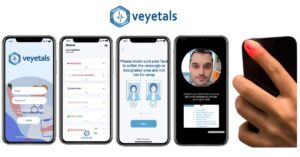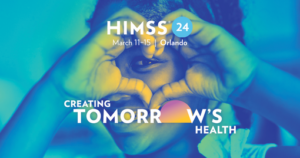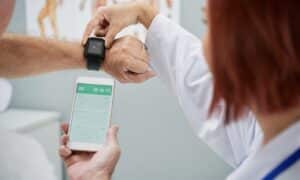Medically Reviewed By: Alexander Evans
Image Credit: Canva
Key Takeaways
- Technological Evolution in Vitals Monitoring: The shift from traditional clinical settings to smartphone apps and wearable devices for monitoring vital signs represents a significant advancement in healthcare technology. This evolution empowers patients with real-time access to their health data, enabling better self-management and awareness of health conditions.
- Role of rPPG Technology and Telehealth Apps: Remote Photoplethysmography (rPPG) technology and telehealth vital signs apps have revolutionized personal health monitoring. They allow for non-invasive tracking of vital signs like heart rate and oxygen levels, facilitating remote patient monitoring and enhancing communication between patients and healthcare providers.
- Future Prospects and Challenges: The future of vitals monitoring is poised for further advancements with the integration of AI and machine learning for more accurate health analyses. However, challenges such as data accuracy, privacy concerns, and the need for standardization in health apps remain critical considerations.
The field of healthcare is undergoing one of the most remarkable technological evolutions in the way we monitor vital signs. Having crouched for too long in the conventional clinical settings, it is now learning to stand on its feet and raise its hands, in the palms of which it holds smartphones and other devices loaded with intelligently developed apps; this journey reflects a significant leap in medical technology and patient empowerment. In this blog, we will take a random walk along this evolutionary curve; we will explore the role of rPPG technology, apps for tracking vitals, and telehealth vital signs apps.
The Traditional Approach to Vitals Monitoring
Clinical Monitoring
Traditionally, if you need to have your vital signs like heart rate, blood pressure, and oxygen saturation monitored, you’ll need to take the day off, take favors from colleagues, infuriate your manager, and spend the better part of the day at a clinic or a hospital. These measurements are typically taken using specialized equipment and interpreted by healthcare professionals. This method, while accurate, limits monitoring to specific intervals and requires your physical presence.
The Shift Towards Digital Solutions
The Advent of Digital Monitoring Devices
While the first significant evolutionary change had come with the building of modern hospitals where doctors and technicians attend to your needs with on-site monitoring equipment, the second major mutation has now occurred, with the development of digital health monitoring devices. Portable blood pressure monitors, pulse oximeters, and digital thermometers allowed patients to track some of their vitals at home, providing more data points for healthcare providers in a continuous stream; the flip side of this picture is that they still require separate devices to monitor each vital sign.
The Rise of rPPG Technology
Understanding rPPG
Remote Photoplethysmography (rPPG) technology has been a game-changer in vitals monitoring. This innovative technology uses light-based sensors to detect blood volume changes in the microvascular bed of tissue, typically through a camera lens, enabling non-invasive monitoring of heart rate and other vital parameters.
rPPG and Smartphone Integration
The integration of rPPG technology into smartphones and wearable devices has revolutionized personal health monitoring. By using the smartphone’s camera or attached wearable sensors such as the ones now found in the most inexpensive of smartwatches, individuals can now monitor their heart rate without the need for dedicated medical devices in a clinical setting or that need to be stowed away after each use. If you’ve ever seen those big mercury-filled devices with a rubber balloon that has to be pumped to inflate a cuff, you know what I’m talking about
The Emergence of Apps for Tracking Vitals
All-in-One Health Monitoring
A number of apps that allow users to check vitals and consolidate health monitoring in one place are now available in the market. These apps mostly use sensors already present in smartphones and wearables, making it easier to track heart rate, oxygen levels, and even stress levels.
User-Friendly Interfaces
User-friendly interfaces that come along with these apps make it easier for individuals of all ages and tech-savvy to understand and track their health metrics.
Telehealth and Vital Signs Apps
Remote Patient Monitoring (RPM)
Telehealth vital signs apps have extended the scope of remote patient monitoring, allowing healthcare providers to monitor patients’ vital signs in real-time, regardless of their location. This is particularly beneficial for chronic disease management and elderly care of patients who cannot regularly come for on-site testing due to ambulatory constraints or because they live in a remote area.
Enhancing Patient-Doctor Communication
These apps facilitate better communication between patients and doctors, where patients can share their vitals data with their healthcare providers, and doctors can provide more informed consultations and timely medical interventions.
The Impact of Vitals Monitoring Evolution
Empowering Patients
The shift to smartphone apps for vitals monitoring has empowered patients to become active participants in their health management, where they are able to access their health date in real-time, and gain at least some basic insights into their health that encourage them to not ignore possible indicators of future distress and to adopt healthier lifestyles.
Challenges and Considerations
While this phenomenal evolution in the monitoring of vital signs has brought convenience and empowerment to the patients, it also raises questions about data accuracy, privacy, and the need for standardization in health apps.
The Future of Vitals Monitoring
The future of vitals monitoring is likely to see more advanced integration of AI and machine learning, offering more accurate analyses and personalized health insights. Recent announcements of the possible invention of a wearable AI Pin could really be the next phase, where the on-body device becomes even less obtrusive and more powerful in the functions it is able to perform.
Conclusion
The evolution from clinical to smartphone app-based vitals monitoring marks a significant departure in healthcare technology. We’re no longer even on the same plane, but have entered an entirely different level of monitoring activity. With advances in rPPG technology and the proliferation of health monitoring apps, individuals now have unprecedented access to and control over their health data. As this field continues to grow, it is reasonable to expect even more innovative solutions that further bridge the gap between traditional healthcare and modern technology, enhancing both patient care and overall health management.

Revolutionize Your Wellness Routine: Monitor Vital Signs Anywhere with Veyetals App

Experience the Future of Vitals Monitoring at HIMSS 2024

Understanding the Game-Changing Impact of Heart Rate Monitors on Cardiovascular Care and How You Can Use It
Unlock Your Health: Exploring the Power of Biometric Tracking for Wellness Insight

Revolutionizing ICU Patient Care: The Future of Contactless Monitoring Systems




